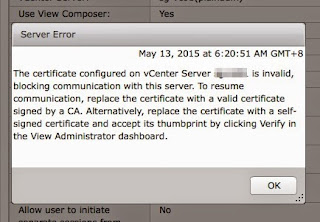vSphere+ Licensing Overview
With the introduction to vSphere + licensing, there are some beneficial in term of licensing which many might not notice.
In a nutshell, software companies are all moving to SaaS and subscription licensing basis. So VMware have also introduce vSphere+ to cater to the needs of customer and adapting to changes in the industry.
As an architect, you will have to take consideration on what is needed often with the Bill of Material so a need to understand the licensing differences from perpetual license is often required.
In the traditional perpetual licensing, it was licensed in per CPU/socket basis and each CPU only alllows up to 32 cores. ie. if you have a CPU that has e.g. 48 cores, that CPU will require two CPU licensing.
In top of that, you will also have to license an instance of the number of vCenter Server needed in your environment with active Subscription and Support (SnS) to be eligible for upgrade and support call.
With the new vSphere+ licensing, the licensing is based on cores and with a minimum of 16 cores per socket. Rather than a maximum, there are not any processor that used in a server that has 16 cores so this limit requirement mostly won't applies in any situation.
Using the above example of 48 cores per CPU, customer only needs to purchase 48 cores for licensing perspective. In such, the cost would be lower as the customer only need to purchase just enough, instead of over purchase all the cores up front (in perpetual will be two license each up to 32 cores, in total 64 cores has been purchased for 48 cores CPU).
The best part isn't just that. vCenter Server are included in the vSphere+ licensing as long the environment is running and licensed with valid vSphere+ licensing. In top of licensing saving, you also get vCenter Server instance saving at the same time.
With subscription licensing, there is no need to add on SnS as the licensing already include as part it.
Example of a server with two CPUs each with 48 cores. Using list price which you can look around. You might realize that a 3 years perpetual might be cheaper, however, this didn't include the vCenter Server instances that is required. vSphere+ will eventually end up cheaper.
vSphere+ 1 year = $13,440
vSphere Enterprise Plus 1 year = $19,752
vSphere+ 3 years = $28,800
vSphere Enterprise Plus 3 years = $26,244.28
vSphere+ 1 year = $7,780
vSphere Enterprise Plus 1 year = $9,876
vSphere+ 3 years = $15,600
vSphere Enterprise Plus 3 years = $13,116.64
In summary, we can see that subscription licensing will help provide certain level of saving. Do note that these above examples are using list price that you can find from the internet and have not included any discount level which you are entitled.
Price reference:
- https://www.softwareone.com/en-ch/blog/articles/2022/07/05/vsphere-subscription?KSD4oz2hr4=TJMM2mhCRg&gs=CloudServices
- https://store-us.vmware.com/vmware-vsphere-enterprise-plus-5653277800.html
Update 27th Feb 2023

Comments